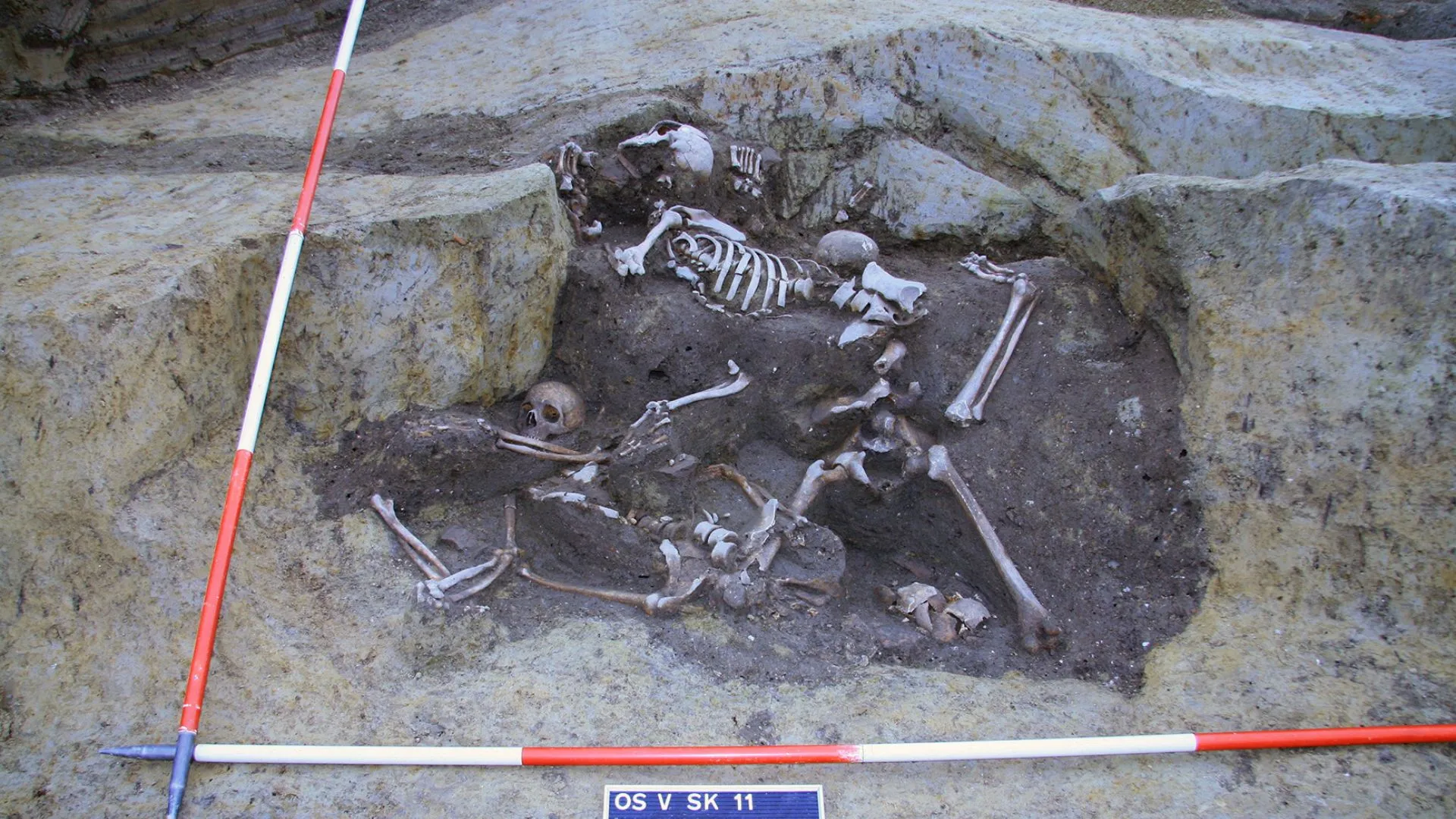
In 2011, a mass grave with seven skeletons was discovered in an ancient well in Osijek, Croatia (the Roman city of Mursa).
Now, analysis suggests that the skeletons belonged to seven men who were Roman soldiers. Four of the seven skeletons belonged to younger adults and three to middle-aged adults.
They were likely victims of a “catastrophic event” during the mid-3rd century CE.
The mass grave was located in ancient Mursa, a key settlement near the Roman military border. The researchers believe the skeletons probably belong to men who fought in the Battle of Mursa in A.D. 260.
The battle occurred during the “Crisis of the Third Century” (A.D. 235–284), a period when many vied for power in the Roman Empire.
“The presented multidisciplinary analyses of the Mursa mass grave strongly suggest that the studied individuals were Roman soldiers, victims of a catastrophic event occurring as a result of the ‘Crisis of the Third Century’, most probably the battle of Mursa from 260 CE,” the researchers from the Institute for Anthropological Research in Zagreb, Croatia, wrote in the study paper.
Evidence of several injuries
The seven complete skeletons were recovered in 2011 from a well in Osijek during a university construction excavation.
Live Science reported that the bodies were found in haphazard positions, including head-down, suggesting they were unceremoniously dumped.
Lead author Mario Novak stated that the individuals were likely stripped of all valuables, such as weapons, armor, and jewelry, before being thrown into the well.
The skeletons showed evidence of prior injuries, including blunt force trauma to the forehead, rib fractures, and weapon wounds.
Furthermore, a layer of new bone suggested that all seven individuals likely had a lower respiratory tract infection just before their deaths.
“The presence of new periosteal bone formation in that skeletal location has been used as evidence for lower respiratory tract disease in the archeological record,” the study stated.
DNA shows genetic diversity
The remains were dated using carbon dating on four skeletons, placing them in the second half of the third century.
Reportedly, it is also supported by the single artifact found in the well — a Roman coin minted in A.D. 251.
The researchers noted that the characteristics of the skeletons are “almost identical” to those found in battle-related mass graves, citing the remains of soldiers from Napoleon’s Grand Army as a comparison.
Moreover, DNA analysis of the men revealed “high genetic diversity.” This finding is consistent with historical records indicating that the Late Roman armies often incorporated ethnically diverse groups, such as Sarmatians, Saxons, and Gauls.
Another mass burial, found in a different well at Mursa and thought to be very similar to the first, is scheduled for additional study.
Researchers presume these remains are also soldiers who perished in the Battle of Mursa in A.D. 260
The findings were published in the journal PLOS One on October 15.